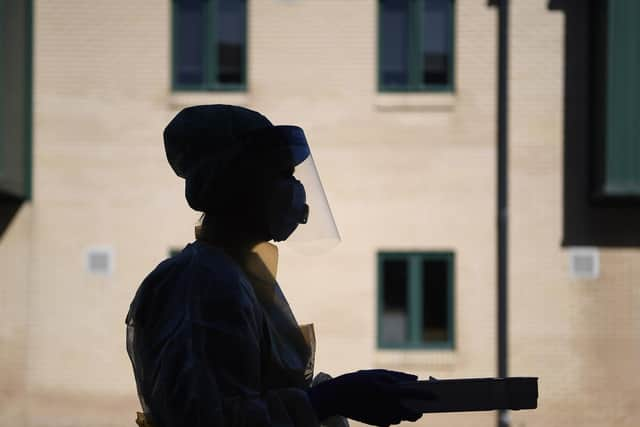New figures show 178 further coronavirus-related deaths outside Yorkshire hospitals
and live on Freeview channel 276
The latest figures from the Office for National Statistics, show that 107 people have died from Covid-19 in care homes across the region.
A total of 56 deaths are recorded for people who died at home.
Advertisement
Hide AdAdvertisement
Hide AdTen people have died in hospices and five in other communal establishments or elsewhere.


The ONS said the numbers are based on where Covid-19 is mentioned anywhere on the death certificate, including in combination with other health conditions.
These figures reflect deaths registered up to April 10.
Latest weekly figures from the Office for National Statistics show there were 1,662 deaths involving Covid-19 in England and Wales.
The equivalent figure for hospital deaths over the period is 8,673.
Advertisement
Hide AdAdvertisement
Hide AdOf the deaths outside hospitals 1,043 took place in care homes, 466 in private homes, 87 in hospices, 21 in other communal establishments and 45 elsewhere
A total of 406 deaths involving Covid-19 in England and Wales registered up to April 3 occurred outside of hospitals, according to provisional ONS figures - around 10% of the total.
Of these, 217 were registered in care homes, 33 in hospices, 136 in private homes, three in other communal establishments and 17 elsewhere.
The ONS figures also show there were 12,516 deaths involving Covid-19 in England up to April 10 (and which were registered up to April 18), compared with 10,260 deaths in hospitals in England for the same period, reported by NHS England.
Advertisement
Hide AdAdvertisement
Hide AdThe ONS total is 22% higher than the total published by NHS England.
This is because the ONS figures include all mentions of Covid-19 on a death certificate, including suspected Covid-19, as well as deaths in the community.
The NHS figures only include deaths in hospitals where a patient has been tested for Covid-19.
Responding to the latest ONS figures, Unison general secretary Dave Prentis said: "This doubling in deaths is shocking evidence of the government's shambolic handling of the Covid crisis.
Advertisement
Hide AdAdvertisement
Hide Ad"Staff working in care homes and those looking after people in the community have been massively let down. The ongoing lack of protective kit has left many terrified they'll spread this deadly virus or become infected themselves.
"There's still widespread confusion among workers and their employers over what equipment they should have. Some staff are being told off for wearing masks while others can't even get hold of hand sanitiser, according to reports still coming into Unison's PPE alert hotline.
"The Government has got to get its act together if we are to prevent more lives being needlessly lost."
On the ONS figures, councillor Ian Hudspeth, chairman of the Local Government Association's community wellbeing board, said: "Today's sad and shocking figures highlight just what a severe challenge we face in care homes and other community settings.
Advertisement
Hide AdAdvertisement
Hide Ad"Council social care staff and care homes need urgent access to reliable and ongoing supplies of quality PPE, increased rapid and comprehensive testing and greater support with staffing and other equipment, on an equal footing with the NHS.
"Data on all deaths from Covid-19 needs to be published promptly and accurately, so we can have full confidence and transparency in these figures as part of our plan to defeat this deadly virus.
"We are also yet to see the peak of the stress on the social care system, due to the delay between hospital admissions and discharge, which will require the need to start thinking about shifting capacity across from hospitals and into the community to meet a surge in demand."